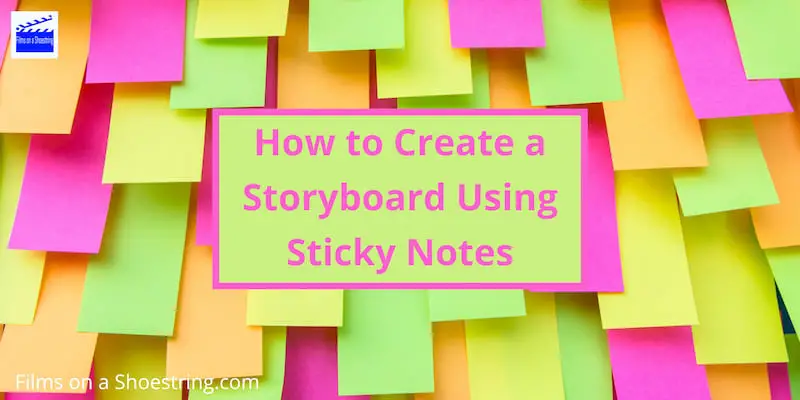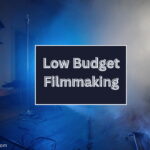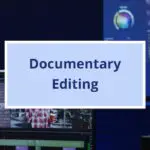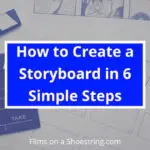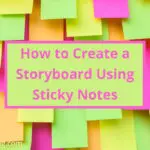Create a storyboard using sticky notes when you’re first working out how to get started in filmmaking and don’t have the funds yet for storyboarding software.
Why Use Storyboarding?
Storyboarding is an essential part of the video production process. It allows you to visualize your video before you start shooting, making it much easier to ensure that everything goes as planned.
In addition, storyboarding can help you:
- – Streamline the video-making process
- – Avoid costly mistakes
- – Increase the quality of your videos
- – Tighten up your editing process
- – Facilitate collaboration between team members
The process of creating a storyboard with sticky notes is simple and straightforward.
What Is a Storyboard?
A storyboard is a visual guide or a series of sketches that outlines the sequence of events in a story, explaining the plotline, characters, and setting.
Storyboarding is a crucial step in the creative process for filmmakers, animators, graphic novelists, and designers. It helps to plan out a story before beginning production, which saves time, resources, and minimizes the risk of errors.
Materials Needed
Before we begin discussing the step-by-step guide, let’s first highlight the primary tools needed to create a storyboard. The materials required are relatively simple and easy to source, and they include:
– Sticky Notes: Different-colored sticky notes of varying sizes help to indicate different scenes or characters, and can easily be rearranged to adjust the flow of the story. These should be large enough to fit your sketches and any notes you want to make.
– Markers: Black and colored markers are essential for outlining and highlighting important information. Use different colors to highlight important elements or to create visual hierarchy.
– Ruler: A ruler can be used to draw straight lines and create clean, precise borders.
Using sticky notes gives you the freedom to move and rearrange elements as needed, making the process more intuitive and less rigid.
Key Takeaway: When creating a storyboard with sticky notes, having the right materials is essential to bring your ideas to life. In addition to sticky notes, markers, and a ruler can help you create an efficient and flexible workflow.
Step-by-Step Guide
When creating a storyboard using sticky notes, there are three main stages to the process: brainstorming ideas, sketching out the story and creating a visual storyboard. Here is a step-by-step guide on how to use sticky notes when creating a storyboard:
Brainstorm Ideas
Begin by writing down your ideas on different colored sticky notes as they come to mind. Every idea, no matter how small or insignificant, should be noted. This step allows you to explore different avenues and gives you room for creative expression.
Sketch Out the Story
Once you’ve collected a variety of ideas, group them according to similarities and begin sketching rough outlines of the story on the sticky notes. Doing this helps to give focus to your storyline.
Create a Visual Storyboard
After sketching all the basic ideas and refining your storyline by rearranging the sticky notes as needed, you can start creating a visual storyboard. A visual storyboard should consist of a sequence of interconnected images or sketches that represent each scene. Use your markers to add details, such as text, colors, and emotion to each sketch.
Post-It Storyboarding
In this video, Mike explores the benefits of using Post-it Notes for storyboarding and how they can make changes while on set. They also give advice on script writing, including how to use a plot card and how to organize scripts by using the study kit.
Using Post-it Notes to Storyboard! (8thWeekday):
Video’s Key topics
1. Introduction to Post-it Notes for Filmmaking
– Mike’s favorite part of filmmaking is the ability to make changes
– Introduction of Post-it Note study kit for use in filmmaking
– Benefits of using the notebook and study kit for easy changes to be made
2. Components of the Notebook
– The notebook contains everything needed for filmmaking
– Importance of shot lists and storyboards
– How to prepare for filming with the notebook and script
3. Scriptwriting Advice
– Mike gives advice on how to write a script
– Starting with a plot card and outlining the sequence of events
– Importance of feedback and improvement
4. The Script Organization Process
– The script should be color-coded by location and marked with post-it flags for each scene
– Taking notes on images and angles for each scene
– The process should be repeated for each scene and location in the story
Tips for Storyboarding
Storyboarding with sticky notes can be both fun and efficient, but here are a few things to keep in mind when creating one:
– Keep it simple: Stick to the main story. Avoid adding unnecessary details that could potentially convolute your plot.
– Focus on the big picture: Keep in mind the overarching narrative and character development. Ensure that each scene contributes to the story’s development and is essential to the story.
Story Development
To create a storyboard using sticky notes, you should first brainstorm ideas for your story, then sketch out the story and create a visual storyboard. It is important to keep the following tips in mind while storyboarding:
– Keep It Simple: Your storyboard should be easily understood and convey the essence of your story without unnecessary details.
– Focus on the Big Picture: Your storyboard should outline the larger themes and plot of your story to help guide the story to its conclusion while keeping it purposeful.
– Incorporate Your Visual Brand: Your storyboard should reflect the unique identity of your brand.
Do you have a Wes Anderson aesthetic, or are you an aspiring Ken Burns with a serious focus on your topic?
Sticky Notes Storyboarding
When it comes to storyboarding, few tools are as versatile and easy to use as sticky notes. Here’s a step-by-step guide to creating a visual storyboard with sticky notes:
To begin, create a rough draft of your storyboard using pencil and paper. Sketch out the overall narrative, including key scenes and characters. Using sticky notes, organize your ideas into a cohesive storyboard by grouping together and color-coding related ideas. Edit and refine your storyboard as you go using the markers to make changes in the drafts.
Key Takeaway: Storyboarding with sticky notes is an efficient and easy way to visualize and organize your story ideas. With a few basic materials and a thoughtful approach, you can use storyboard sticky notes to create a comprehensive and engaging visual representation of your story.
1. Create a Rough Draft: To start things off, grab a stack of sticky notes and begin jotting down your ideas. “Try not to overthink it,” suggests animation producer Jessica Hernandez. “Just write down everything that comes to mind.”
2. Organize Ideas: Once you have a bunch of sticky notes, start organizing them into groups. You might have a group of notes that belong to the beginning of your story, another group for the middle, and a final group for the end. Use a ruler to keep your notes aligned and tidy.
3. Sketch Out the Story: Once you have your notes organized, take a sheet of paper or a whiteboard and start sketching out your storyboard. Use your sticky notes as a guide, arranging them in the order you want your story to unfold.
4. Edit and Refine Your Storyboard: With your rough storyboard in place, start refining your ideas and adding detail. Don’t be afraid to move things around.
Key Takeaway: Sticky notes are an inexpensive and flexible tool that can make storyboarding a breeze. Use them to organize your ideas and create a visual storyboard that helps you bring your story to life.
Markers
Markers are an essential tool when creating a storyboard using sticky notes. They can help add visual flair to your notes and make important elements stand out. When selecting markers, it’s important to consider the color scheme that you want to use. You can use different colored markers to represent different elements in your story, such as characters, settings, and actions. This can help you keep track of different elements as you sketch and organize your storyboard.
To make the most of your markers, use them sparingly and intentionally. Instead of overwhelming your storyboard with too many colors and details, focus on highlighting the most important elements. Use a ruler or straight edge to create clean lines and a consistent look throughout your storyboard. As you work through your storyboard, keep in mind your brand identity and the overall tone of your story. Incorporating your brand colors and logo can help tie your storyboard together and make it feel cohesive.
Remember, the purpose of using markers in your storyboard is to create a visual representation of your ideas and story. Make sure your markers help you achieve that goal by using them strategically and thoughtfully.
– Consider the color scheme when selecting markers
– Use different colors to represent different elements in your story
– Use markers sparingly and intentionally
– Focus on highlighting important elements
– Use a ruler to create clean lines and consistency throughout your storyboard
– Incorporate your brand identity into your storyboard to tie it together.
Key Takeaway: When creating a storyboard with sticky notes, using markers can add visual flair and help important elements stand out. Use them sparingly and intentionally and consider your brand identity when selecting colors.
Ruler
By using a ruler, your storyboard will appear more polished, easy to read and work with. It will also make the process smoother if you collaborate with someone else when developing the story sketches, as all the elements will be aligned and easily identified.
Key Takeaway: Using a ruler can vastly improve the appearance and organization of a storyboard, helping to create something more cohesive and a better visual tool.
Brainstorming
The first step is to brainstorm all the ideas, the plot, and characters that will be included in your storyboard. Here, you can use various brainstorming techniques such as mind mapping, word association, or even talking to your team to get fresh perspectives.
Before starting the storyboard process, it’s crucial to brainstorm all the ideas to get an accurate vision of the story’s direction. This phase is essential for creating well-structured and captivating storyboards. To begin with, gather a team and start brainstorming the story’s central themes, characters, plotlines, and settings. Write down every idea on a sticky note and stick them to a blank surface, such as a whiteboard or wall. Remember, the brainstorming phase is all about generating ideas, so be creative and keep an open mind. Once you’ve covered all the potential ideas, try grouping similar concepts together to create a more coherent story. Here’s a pro tip- “Don’t worry about trying to perfect everything. You can narrow down later, in the following steps of the process.”
Tips for brainstorming:
– Gather your team to brainstorm collectively
– Write all the ideas down on sticky notes
– Group similar concepts together
– Be Creative, and don’t worry about perfecting
Key Takeaway: Brainstorming is a crucial step in creating a coherent and captivating storyboard. Use sticky notes to gather all the ideas and group similar concepts together for structure.
Sketch Out the Story
Once you have your ideas in place, you can start sketching out your storyboard. This involves creating rough sketches and placing them in a sequence that will ultimately form your storyboard.
When it comes to sketching out the story for your storyboard, there are several important factors to consider. First and foremost, it’s important to have a clear understanding of the message that you want to convey through your storyboard. As you begin to sketch out the scenes and images that will be included in your storyboard, keep in mind what you want your audience to take away from your story. This will help you to create a cohesive and impactful visual narrative.
As you begin your sketching process, make sure to utilize simple shapes and forms to represent your ideas. This will help to ensure that your ideas are easily understood and that your storyboard is easy to follow. Additionally, incorporating your brand identity into your storyboard can help to strengthen the overall impact of your visual narrative.
Key Takeaway: When sketching out the story for your storyboard, keep in mind the message you want to convey and use simple shapes and forms to represent your ideas. Incorporating your brand identity can also help to strengthen the impact of your visual narrative.
Create a Visual Storyboard
After sketching out your storyboard, it’s time to create a visual representation of it. In this step, you can use sticky notes to represent your sketches.
A visual storyboard is a series of images or illustrations that depict the progression of a story or project. It is a useful tool for filmmakers, artists, designers, and other creatives who want to plan out their ideas before execution. Using a sticky note storyboard allows for an efficient and easy workflow.
To begin, place a blank piece of paper on a wall or table and use a ruler to create grids. Each sticky note represents a frame in your storyboard.
Organize Ideas
You can now use your sticky notes to organize your ideas and sketches to create a coherent storyboard. Rearrange and move the sticky notes around as needed to ensure a flow within your storyboard.
Edit and Refine Your Storyboard
Finally, review your storyboard to edit and make refinements where necessary. The use of sticky notes makes it easy to make changes- simply remove or add a sticky note without having to recreate your entire storyboard.
By following this step by step guide, one can create a storyboard with ease and efficiency using just sticky notes.
Key Takeaway: Creating a storyboard using sticky notes is an efficient and easy workflow that can help you organize your ideas and create a visual representation of your story.
Tips for Storyboarding
When it comes to storyboarding, it’s important to keep some key tips in mind to ensure you create an effective and impactful storyboard. Here are some tips to consider:
Keep It Simple:
Simplicity is key when it comes to storyboarding. Focus on the key elements of your story and don’t get bogged down in the details. Keep your visuals clear and uncluttered, and avoid overwhelming your audience with too much information all at once.
Focus on the Big Picture:
Think about the overarching message you want to communicate and construct your storyboard with that in mind. Keep in mind the takeaways you want your audience to have and make sure that your storyboard supports those goals.
Incorporate Your Brand:
Your storyboard incorporates your visual brand, and it’s important to bring elements of your brand into your storyboard. Whether it’s through the use of subject, shot list, lighting, or other design elements, make sure your storyboard reflects your brand identity as a filmmaker.
Key Takeaway: When storyboarding, remember to keep it simple, focus on the big picture, and incorporate your brand identity to create a clear and impactful message.
Keep It Simple
One of the best tips for effective storyboarding is to keep it simple. By focusing on the big picture and avoiding unnecessary details, you can create a storyboard that effectively communicates your story. To achieve simplicity, you can use sticky notes to capture the main ideas and plot points of your story without getting bogged down in the details. As you create your storyboard, strive for clarity and conciseness in your writing, sketching, and visual design. Remember, the purpose of storyboarding is to communicate and refine your ideas quickly and efficiently, not to create a finished product. By keeping it simple, you can make the storyboarding process more manageable and enjoyable for everyone involved.
Key Takeaway: Keeping your storyboard simple is the key to effective communication and efficient workflow.
Focus on the Big Picture
When storyboarding using sticky notes, it’s important to keep your focus on the big picture. This means considering the overall structure and flow of your story, rather than getting bogged down in small details. One important tip for staying focused on the big picture is to use color-coded sticky notes. For example, you could use green sticky notes for positive elements of the story, red sticky notes for negative elements, and yellow sticky notes for neutral elements. By doing this, you can quickly scan your storyboard and get a sense of the overall balance and tone of your story. Another useful technique is to use a one-sentence summary to describe each scene you’re planning, as this keeps the focus on the main idea and avoids unnecessary details. By keeping your focus on the big picture, you can create a storyboard that’s not only efficient and easy to work with, but also tells a compelling and cohesive story that resonates with your audience.
– Use color-coded sticky notes for easy scanning
– Describe each scene with a one-sentence summary
– Stay focused on overall structure and flow of story
Key Takeaway: To create an effective storyboard using sticky notes, it’s essential to keep your focus on the big picture. Use color-coded sticky notes, one-sentence summaries, and don’t get bogged down in small details.
How to Use Sticky Notes for Storyboarding
Storyboarding is an essential way to organize your thoughts and ideas before you start filming.
When it comes to storyboarding, sticky notes can be a highly effective tool for brainstorming and organizing ideas. By using sticky notes, you can easily rearrange and edit your storyboard without the need for erasing or starting over.
Sticky notes can be a great way to create a storyboard. They are easy to use and can be arranged in any way you want, and help you develop your film’s story.
More about Filmmaking
- Low Budget Filmmaking: More for Less
- Lighting Department Film Roles
- Shooting An Interview
- Documentary Editing
- What is Sound Design in Film?
- Color Grading for Documentary Series or Film
- Film Set Etiquette: Professional Behaviour on Set
- Observational Documentaries And Their Impact
- Essential Skills for Film Industry Professionals
- How to Create a Storyboard in 6 Simple Steps
- What Makes a Film Successful
- Breaking into the Film Industry without Experience
- Sports Documentary Filmmaking
- How to Create a Storyboard Using Sticky Notes
- Remove Background Noise From Video
- Why Do Filmmakers Use Clapper Boards?
- Indie Films
- Indie Filmmaking
- What is Post Production in Film
- Ken Burns Effect: Creating Eye-Catching Sequences

